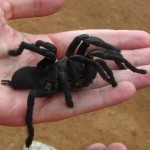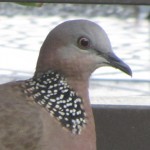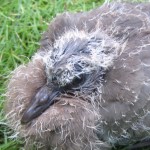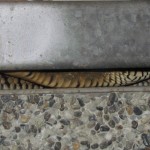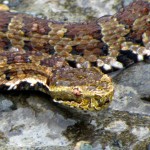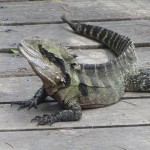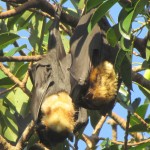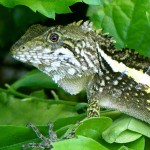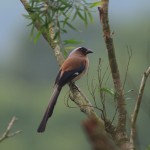Flora and Fauna of Tropical Asia
The fascinating world of tropical nature
Cambodia’s Black Tarantula
The large, hairy and venomous tarantula spider is found throughout the world in as many as 900 species. Here in south-east Asia the most common of them is the Haplopelma genus. Its habitat ranges from Myanmar to Vietnam and as far south as Borneo where it is found burrowing deep in the soil of humid rainforests. The tarantula comes to the surface to hunt for insects, such as crickets and cockroaches, but it is also known to be able to capture larger prey, including lizards and mice. Some species are extremely aggressive and won’t hesitate to attack and bite a… Continue reading
Meet the Irrawaddy Dolphin
The Irrawaddy dolphin (Orcaella brevirostris) is a species of dolphin whose distribution extends from the Bay of Bengal to northern Australia. The most interesting aspect of this oceanic mammal, which measures up to 2.3 metres and weighs up to 130 kilograms, is the fact that it can also be found in large rivers, deep inside the Asian continent. The fresh waters of the mighty Irrawaddy river in Myanmar (from where it gets its common name) as well as the illustrious Mekong river in Laos and northern Cambodia are two places where these animals live in small colonies. Unfortunately… Continue reading
Spotted Dove
Witnessing the behaviour of animals in nature and their relationships is never short of astonishing. The case of the rescued Spotted dove (Spilopelia chinensis) baby, which was cruelly expunged from its nest by the powerful typhoon Soulik over the weekend, is an excellent example. I’ve been hand-feeding the (estimated) 10-day old baby bird for the last two days, literally forcing it to have a warm millet mixture twice a day. The bird’s reluctance to open its beak and accept food from an unfamiliar source seems to stress it out somewhat. However, there is one thing that cheers up… Continue reading
Hand-Raising Spotted Dove Chick
Typhoons can cause enormous damage not only to plants and farms, but also to wild animals. One of the victims of the foul weather earlier this week was a baby dove, found sitting in a state of shock on my neighbour’s lawn. With the bird’s parents nowhere to be found, the neighbour brought the baby dove to me. “You keep birds, you must know a thing or two about them,” he said handing the poor wet creature to me. I do indeed have an aviary and even some experience with hand-raising baby parrots. However, it’s one thing bringing up a… Continue reading
Snake in Aviary
High drama in the aviary for the past two days. On Monday evening, when I walked into the shed which is attached to the house and where a fenced-off area serves as a small aviary for our three parrots, I was welcomed by a large snake crawling on the ground, just a metre or so away from my feet! I rushed to get my snake tong, but by the time I returned to the shed I could only watch the snake’s tail rapidly disappearing in a corner of the aviary, in a narrow opening. The shed is supported by several… Continue reading
Kikuchi’s Habu or Mountain Pit Viper
Yesterday was my lucky day. Kikuchi’s habu or Taiwan mountain pit viper (Trimeresurus gracilis) is an endemic species of snake that is very rarely seen, mainly because it only lives in less populated altitudes of over 2,000 metres above sea level. It is a related but separate species from the much more common Chinese habu (which is allegedly responsible for more snake bites than any other snake on the island). Unlike its nocturnal name sake, Kikuchi’s habu, named after a Japanese researcher who studied the pit viper in the early 20th century, is diurnal and also much smaller,… Continue reading
Australia’s Eastern Water Dragon
Still about the smallest continent, Australia’s eastern water dragon (Physignathus lesueurii lesueurii), an endemic species, is truly a memorable sight. Reaching up to 90 centimetres, this large lizard from the Agamidae family is very shy when living in the wild, but readily accepts human presence in suburban parks and gardens. As the name suggests, the water dragon is a semi-aquatic animal that can be found near creeks, rivers and lakes, although it is also an excellent climber of trees. It is often observed basking on branches that hang over a body of water; that way it can easily… Continue reading
Swinhoe’s Japalura
It is always a pleasure to learn that a species of animal frequenting your backyard is a unique one, not found anywhere else in the world. Swinhoe’s japalura (Japalura swinhonis) is a species of lizard endemic to the island of Taiwan. And what a stunning animal it is! It’s mane scales give an impression that it wouldn’t be out of place in a jurassic park and although it is certainly no dinosaur, this particular species is reportedly the largest of all japaluras, reaching up to 28 centimetres. It can also adapt to the environment by changing its body… Continue reading
The Predator – Grey Treepie
The bulbul nest is now empty. It was a sad end of a rather exciting week which provided us with a rare opportunity to witness the arrival of new life – in the form of four helpless, naked and blind baby birds, totally dependent on their parents to bring them to adulthood. It wasn’t meant to be. As I watched the distressed bulbul mother arrive at her empty nest for the last time, realising that all that herculean effort she had put into bringing up her four offsprings came to nothing, I felt like crying. And yet, this… Continue reading
